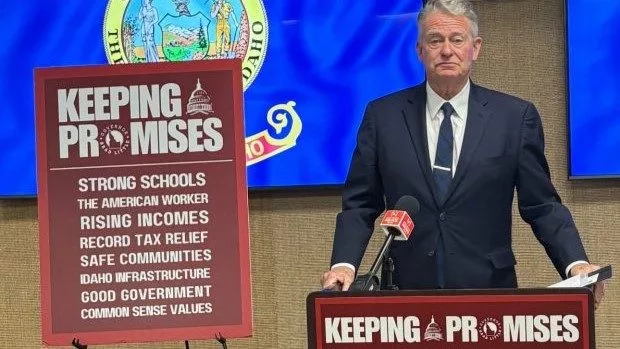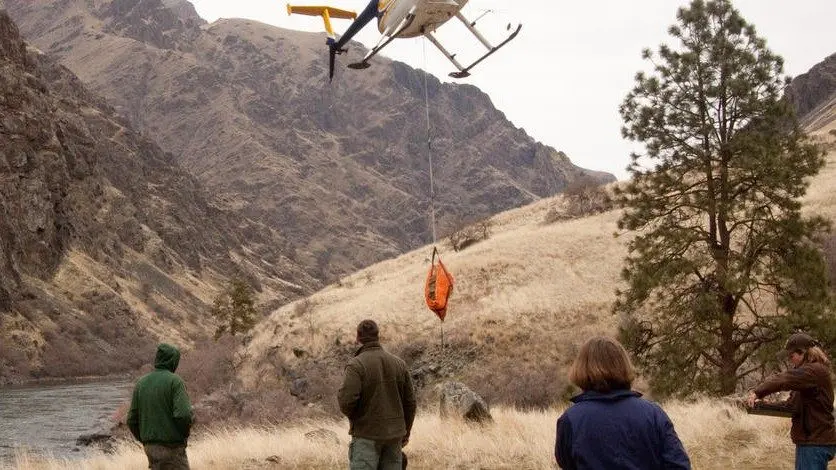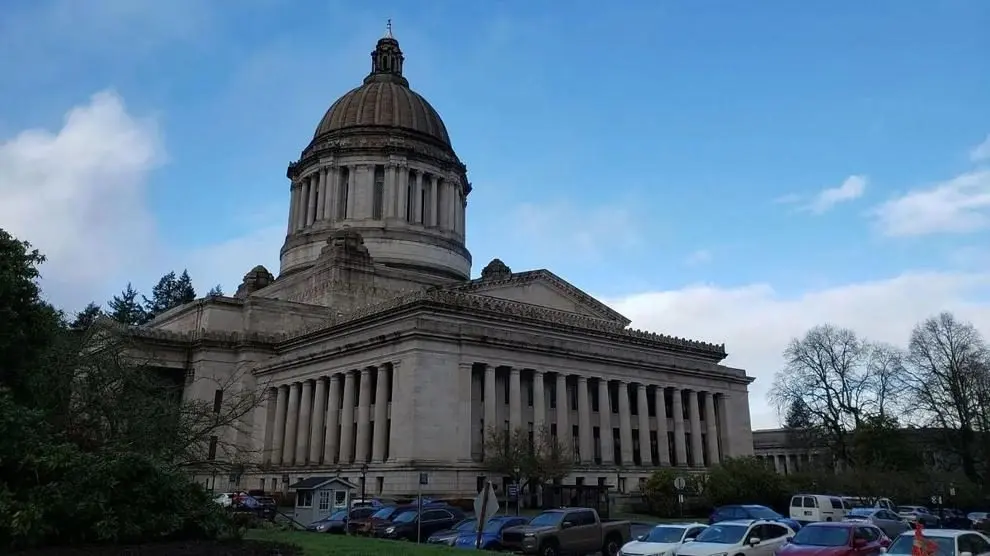Originally posted on IdahoEdNews.org on May 9, 2025
BOISE, ID – A state education official tempered what he implied were exaggerated claims about investments in public education during a post-legislative tour stop in Pocatello Thursday.
The Legislature did increase funding this year for public education — but debate over the amount continues between politicians, education stakeholders and the Idaho Department of Education (IDE).
IDE staff directly countered Rep. Wendy Horman’s touting of $400 million in new public education investments, and watered down Gov. Brad Little’s showcasing of $50 million for rural school facilities.
Gideon Tolman, the IDE’S chief financial officer, did not mention Horman by name, but said claims of a new $400 million investment were “misleading at best.”
Public education’s financial gains were few but appreciated, IDE leaders said, during a 2025 legislative session that had moments ranging from surprising to heartbreaking. From a failed $3 million request for high-needs students to the state’s first private school choice tax credit, the repercussions led to a sense of gloom among the district leaders and superintendents who gathered at Idaho State University for a recap of the session.
As politicians and educators scramble to craft the narrative over what the session meant for public education, Little held his own press event Thursday, where he said “it’s both our constitutional and our moral obligation to the next generation that we increase funding, and more importantly, have better outcomes for public schools.”
The debate over Horman and Little’s claims
In a column for EdNews, Horman wrote that “public education received $400 million in new funding.”
That sparked frustration among education stakeholders who said the public schools budget provides no new additional state funding for anything other than pay increases and benefits for school staff, as Clark Corbin of the Idaho Capital Sun reported.
In response, Horman told Corbin that just $100 million in new general fund dollars will go to pay and benefits. The other $300 million is located outside public school budgets in the form of tax cuts and facilities payments sent to districts to pay down levies and bonds.
IDE staff publicly chimed in Thursday.
Tolman said there was a $100 million increase for pay and benefits — a fact stakeholders and politicians seem to be able to agree on.
The other $300 million is not accessible to charter schools, Tolman said. For traditional school districts, this funding is either “very restricted or has been repurposed” — meaning it was already in education coffers, but got moved from one account to another.
For example, Little has touted a $50 million investment for rural school facilities, a promise he outlined in his state of the state address.
But that $50 million isn’t as new or accessible as it seems, Tolman said.
Half of it had been sitting in a facilities cooperative fund, “which has been on the books for about 20 years,” Tolman said. To access it, a district had to run a failed bond or levy, and document a health and safety concern in the building.
Over the 20 years, only two districts have been able to use the fund — Plummer-Worley to build a new school, and Salmon to replace a roof. School districts that meet those conditions can apply for and receive the funds, but would have to pay back the funds with state dollars they received for paying down bonds and levies, if possible, Tolman said. But, if the money isn’t repaid within 20 years, it will be forgiven.
The second half of the $50 million comes from a preexisting bond levy equalization fund, which was discontinued in the 2024 session — but the cash remained. So this year, legislators moved those dollars into this new fund.
That, Tolman said, helps illustrate why the $400 million claim is misleading — “because it’s repurposing funding that either was given to you and taken away and now given back to you, or was already in the account, or that doesn’t apply to charters.”
At a separate event held the same day, hours later, Little touted “an additional $50 million for rural school facilities.”
He also cited $85 million for increased teacher pay, and “additional literacy investments.”
While Little’s claims about public education investments were more modest than Horman’s, he seemed to defend her thinking when asked about the $400 million. “If a district receives money to pay for facilities, pay for maintenance, that’s money they can use elsewhere,” Little said.
Denied special education funding puts it at top of list for next year
Facing an $82 million special education funding gap, state superintendent Debbie Critchfield pushed to shore up funding in two ways — a new, student-weighted funding formula and a $3 million funding request for high-needs students. Both failed.
The fate of the funding formula rewrite — a long sought-after change that legislators have previously pursued, without success — was likely not a shock.
But IDE staff were “surprised” that the relatively small, $3 million ask “ended up being a fiscal hangup for some,” said Greg Wilson, Critchfield’s chief of staff. “It goes back to how these requests, however minuscule, require a high bar in order to get them across the finish line.”
Wilson said he knew the $3 million “isn’t a lot,” but said it seemed a “reasonable amount to get it through the (legislative) process and get something in place.”
Scott Muir, superintendent of Soda Springs School District, asked IDE leaders why legislators oppose additional special education funding.





